We wanted to celebrate NZ Poetry Day this year with a fabulous list of children’s poetry. And who better to bring this to you than our very own Paula Green, creator of Poetry Box and NZ Poetry Shelf, and wonderful poet for both adults and children.
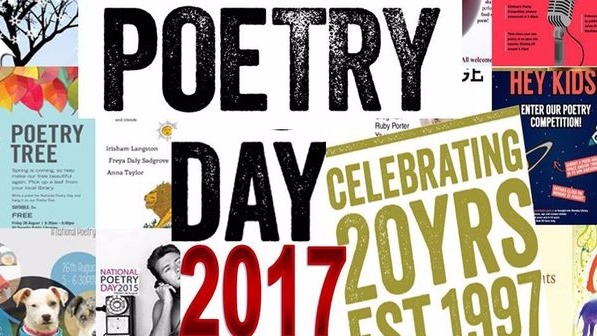
For the delight of reading poetry to your children and the delight of your children reading poetry to you, or to themselves as the sun comes up, here is an A to Z of some of my favourite children’s poetry reads (this is merely the start!). Most New Zealand poetry books for children are out-of-print but you can find them in libraries. Maybe next year we will get some new poetry treats!
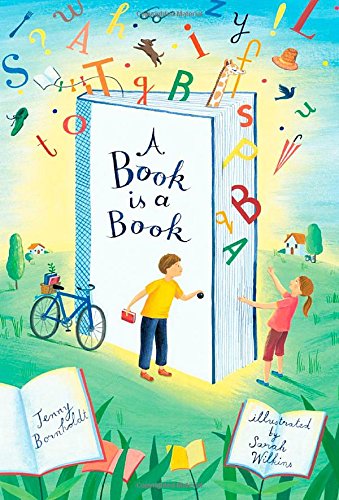
First, a tasty treat from Jenny Bornholdt’s A Book is a Book because it fills me with poetry book happiness:
‘If it’s Sunday and raining, a book is the perfect thing. Even a small book, because boredom can be very big.’ – A Book is a Book (Gecko Press)
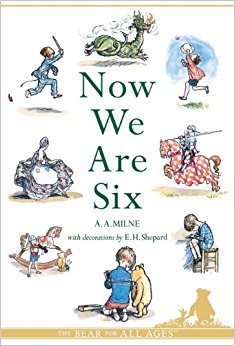
A is for AA (Milne) & Acrobatic (Dr Seuss)
AA Milne was my first love. Pick up Now We Are Six or When We Were Very Young and listen to how many different ways you can read a poem out loud. Your legs will tingle and your toes will tap. Even if you are halfway up the stairs. Add a compendium of Acrobatic Dr Seuss to get you moving across the lounge floor and through the window and into the garden with sheer childhood dancing poetry joy.
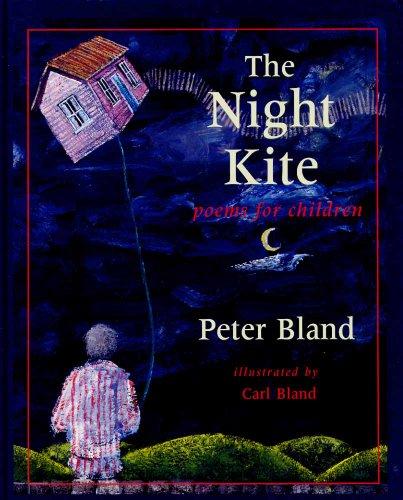
B is for (Peter) Bland
Peter Bland has two scrumptious poetry books for children, The Night Kite (Puffin) and When Gulls Fly High (Puffin), one illustrated by his son, Carl, and one by his daughter, Joanna. Peter word-weaves the world he sees and the world he imagines. Get these in a library.
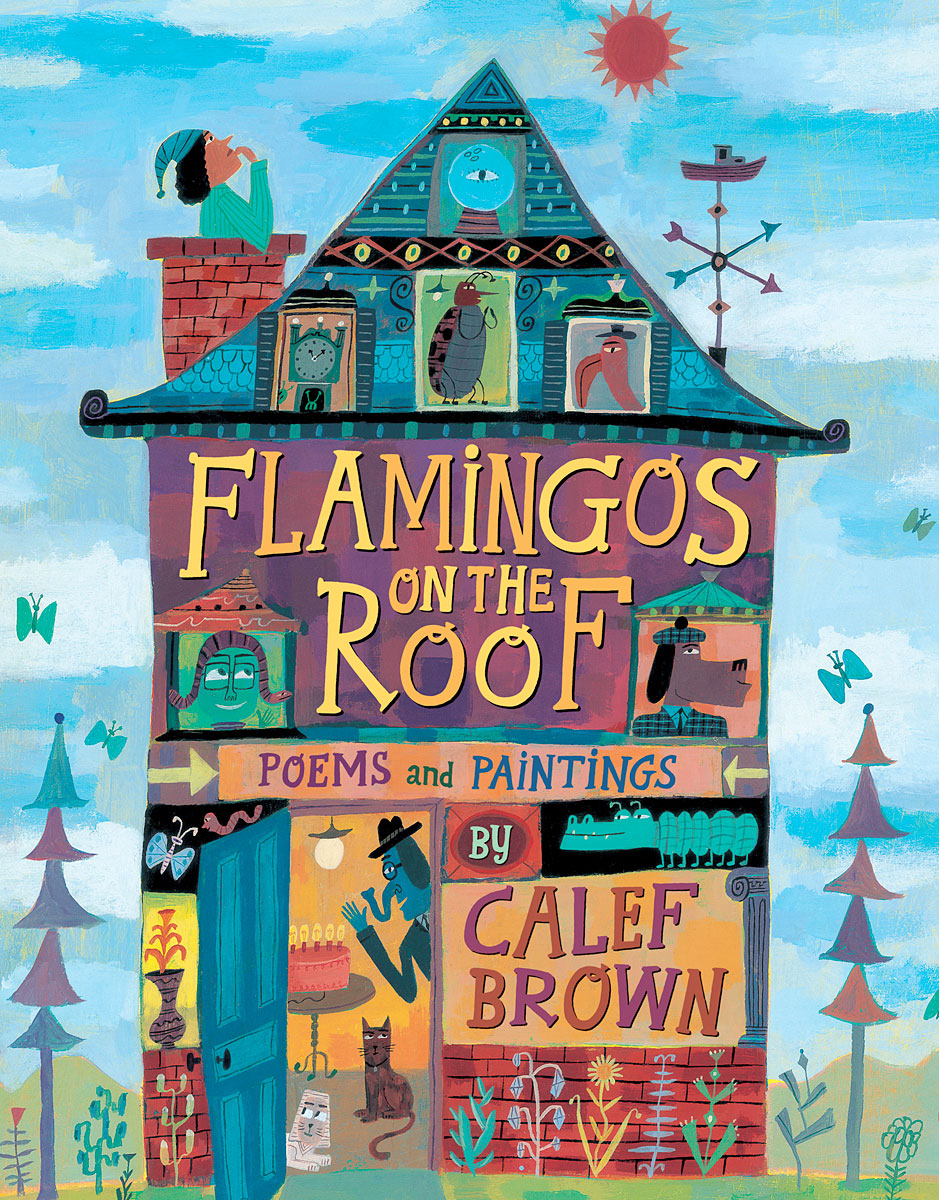
C is for Calef (Brown)
Calef Brown lives in Maine, USA, and is the wittiest, wackiest, twistiest rhyme maker I know. He matches his high voltage poems with his eye voltage pictures. Two of my favourites: Flamingos on the Roof (Houghton Mifflin) and Soup for Breakfast (Houghton Mifflin).
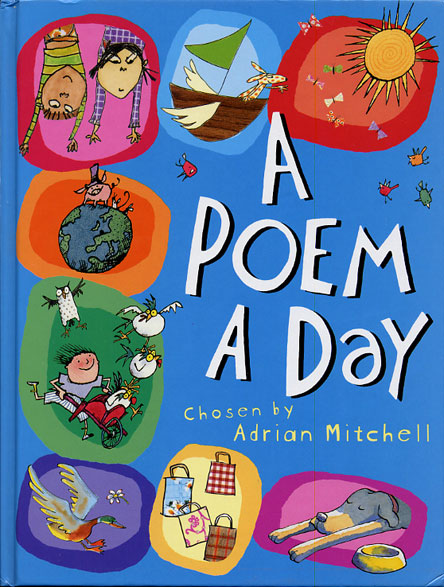
D is for (A Poem a) Day
A Poem a Day (Orchard Books) chosen by British poet Adrian Mitchell is the perfect poetry fodder for a year with Ogden Nash, Shakespeare, Roger McGough, Emily Dickinson, Lewis Carroll, Russell Hoban and AA Milne and masses more, and masses of poems by anon. Four different illustrators with an effervescent internal design.
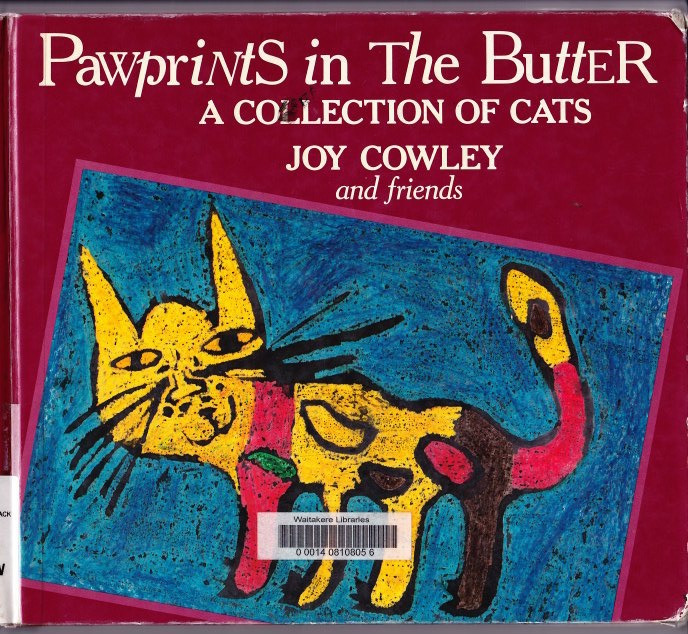
E is for Elephant (Rhymes)
Elephant Rhymes (Scholastic) or Pawprints in the Butter: a collection of cats (Mallinson Rendel) by Joy Cowley. Joy is one of my favourite New Zealand poets for children because she knows how to make words creep creep creep across the steep steep steep page – and whoosh and dart and sing (I borrowed ‘steep’ and ‘creep’ from one of her fabulous cat poems). Get these books from the library.
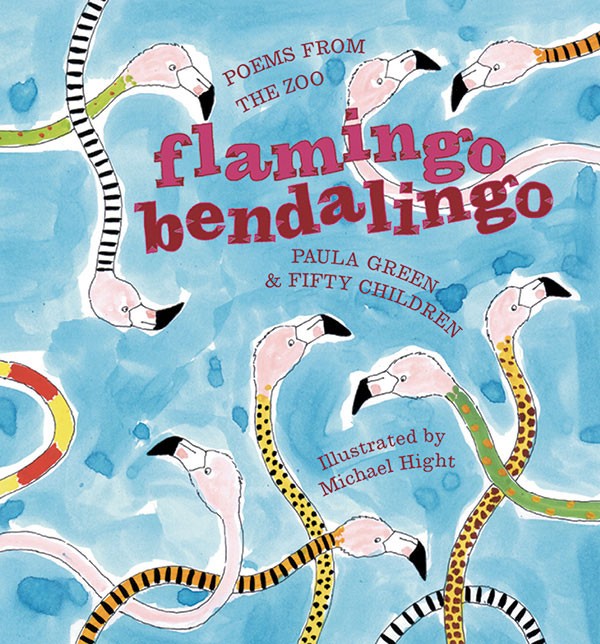
F is for Flamingo (Bendalingo)
My collection, Flamingo Bendalingo (Auckland University Press), is bursting with fabulous poems by children and quirky illustrations by my partner Michael Hight. You will also find this at the library.
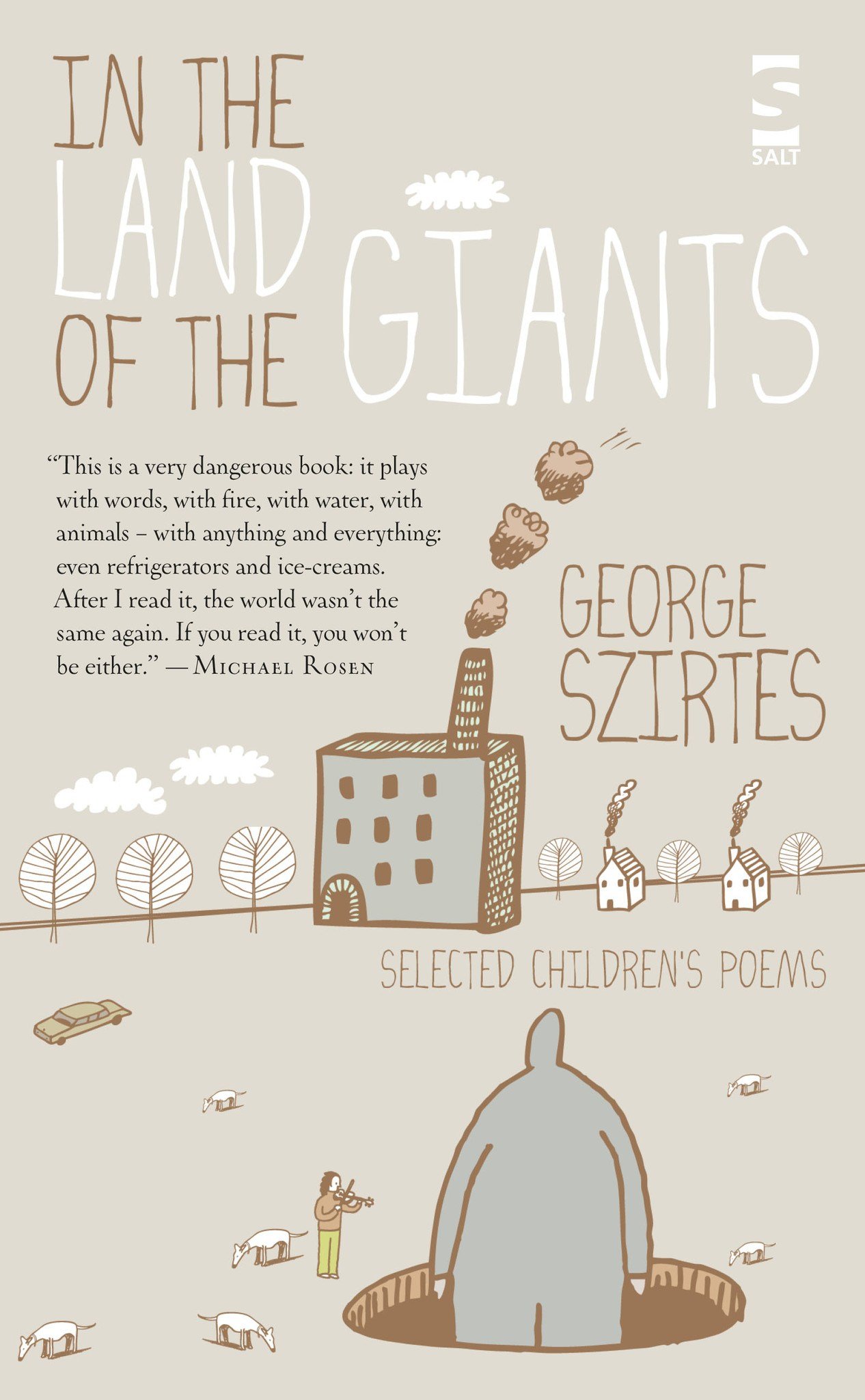
G is for George (Sziries)
George Sziries came to England as a Hungarian refugee when he was a boy. In the Land of the Giants: Selected children’s poems (Salt) is a little book with little poem trapdoors to send you twirling with words north, south, east and west because his poems are like his ‘Old Couples’: ‘Some lighter than leaves/ some wrinkled as water’. He also translated a few Hungarian children’s poems.
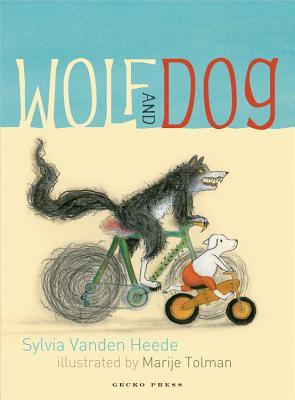
H is for (Sylvia Vanden) Heede
Sylvia Vanden Heede’s fabulous Wolf and Dog (Gecko Press) is just one of a truckload of books that tell stories in the form of poems or make poems in the flow of stories. This is like putting a keyhole in my list, because if you slip through the keyhole, you will discover the GREAT COMBUSTING pleasure of novels-in-verse or stories-in-verse that might be for the young or for the little older. This is a completely different alphabet of delight.
I just have to add Love that Dog (HarperCollins) by Sharon Creech which is the story-poem of a dog, a boy and a teacher and how the boy gets to like poetry very, very much. This book is a tiptop classic.

I is for In (My Notebook Next to Buy):
Naomi Shihab Nye, A Maze Me Poems for Girls (HarperCollins)
Jacqueline Woodson, Brown Girl Dreaming (Penguin), a memoir in verse that won a US National book award for young people 2014, and the John Newbery Medal 2015
Francisco X Alarcón, Laughing Tomatoes and other spring poems (Children’s Book Press), bilingual Latino poet
Paul Fleischman, Joyful Noise: Poems for two voices (Scholastic), John Newbery Medal winner 1989
Carol Murray, Cricket in the Thicket: Poems about Bugs (Henry Holt)
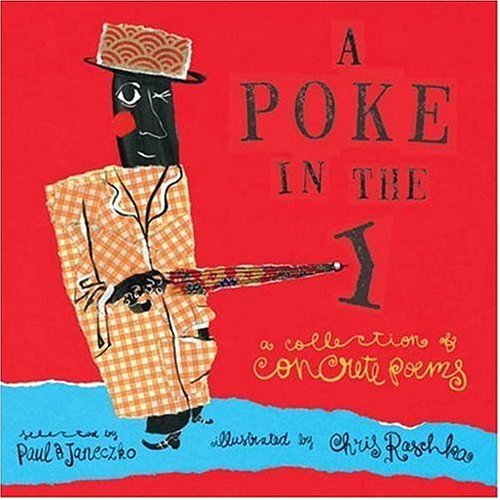
J is for (Paul) Janeczko
Paul Janeczko is a must-have poetry editor to have on your shelves. His books are beautiful to look at, especially when illustrated with torn paper, watercolours and ink by Chris Raschka, with a terrific selection of themed poems. A Poke in the I: a collection of concrete poems (Walker Books) shows how words can wiggle and squirm on the page; A Kick in the Head: An Everyday Guide to Poetic Forms (Candlewick Press), defines forms and gives bright sparking examples; and Firefly July: A Year of Very Short Poems, with illustrations by Melissa Sweet (Candlewick Press) hums with miniature treats.
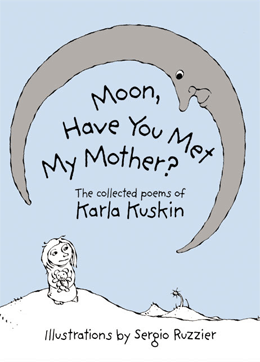
K is for Karka Kuskin
Karka Kuskin has written more than 50 books for children. I have read and reread and read and reread Moon Have You Met My Mother Yet?: The collected poems of Karla Kuskin (Laura Geringer Books) because she knows just how to use the least amount of words, the simplest of words, to say the most surprising, intricate, beautiful, mind-moving, body-dancing things: ‘I need to read.
It’s a little like breathing
or eating
or drinking
my life’s link to thinking’.
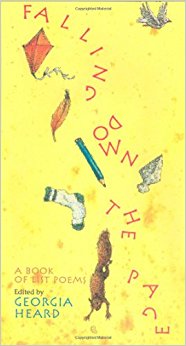
L is for (A Book of) List Poems
Falling Down the Page: A Book of List Poems (Roaring Brook Press), edited by Georgia Heard. I adore reading list poems and I adore writing them, so this very tall skinny book, a bit like a pad of shopping lists with a hard cover and tumbling titles, is a must-read for me.
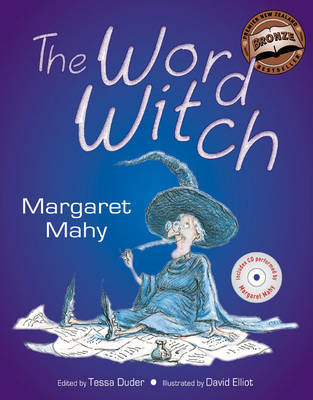
M is for Margaret Mahy
Margaret Mahy is my all-time favourite children’s author, whatever the genre. Her poetry for children is like one magnificent sandpit where castles tower and tunnels lead to magical worlds. Her words slurp and sprinkle and build. Her images surprise and explode and soothe. Her poems make you laugh or ponder, or jump up and down on the spot. As I travel the length and breadth of New Zealand, as an informal ambassador for poetry for children, I get to see how much children adore the poems of Joy and Margaret. Check out The Magical Verse of Margaret Mahy: The Word Witch (HarperCollins). I also love the pitch and pull of A Summery Saturday Morning (Viking) to read aloud.
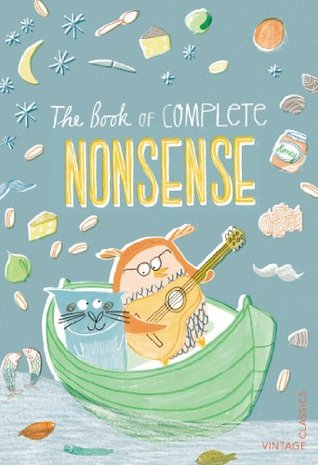
N is for (The Book of Complete) Nonsense
The Book of Complete Nonsense (edited by Vintage) lets you catch up with the outrageous antics of Anonymous, Lewis Carroll, Road Dahl, Edward Lear, Spike Milligan and Ogden Nash. It’s a fun read, but I am bit worried that the male-dominated book suggests women and girls don’t have a sense of humour as poets. Not true. Not nonsense poems but check out girl power in Reaching the Stars: Poems about Extraordinary Women & Girls (Macmillan).
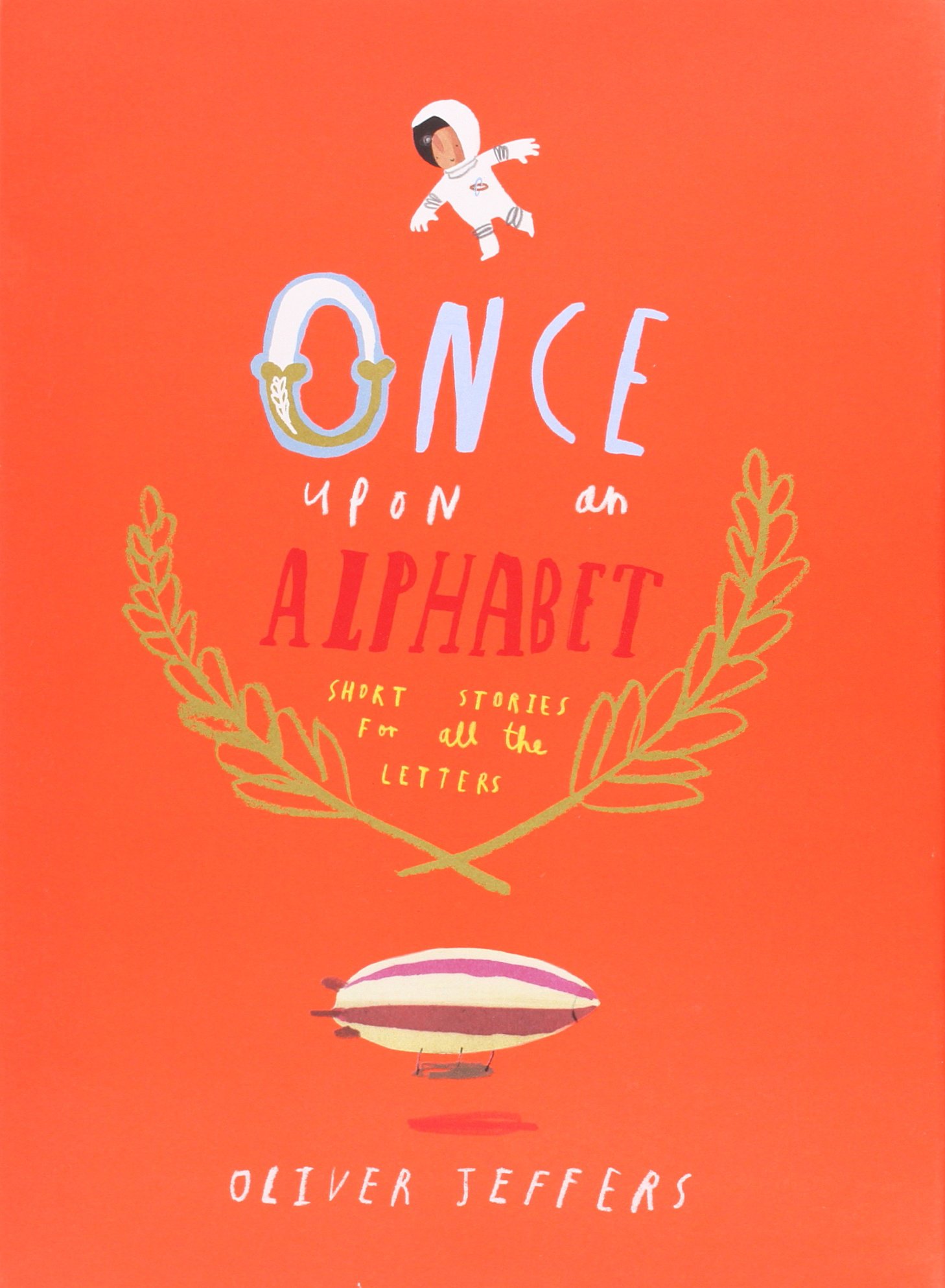
O is for Oliver (Jeffers)
Oliver Jeffers’s Once Upon an Alphabet: Short Stories for all the Letters (HarperCollins) because there is a fine line between a short poem and a short story and these are cracking examples. As you might expect there is an acrobatic astronomic amplification of alliteration. One of the best looking books on my poetry shelves.
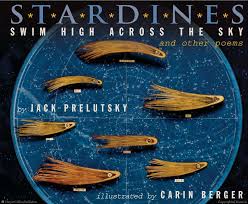
P is for (Jack) Prelutsky
Jack Prelutsky’s Stardines Swim High Across the Sky and other poems (Greenwillow), with ultra-cool illustrations by Carin Berger, has the best title I know. My mind fills with such hedgeclog pictures, I want to get writing. The itch to write and read is a terrific hook for children’s poetry books. Children love mixing and matching words to invent something new. Jack has come up with a bunch of invented creatures including wedgehogs, magpipes, fountain lions. Like Mahy, he is not afraid of deliciously big words (lachrymose).
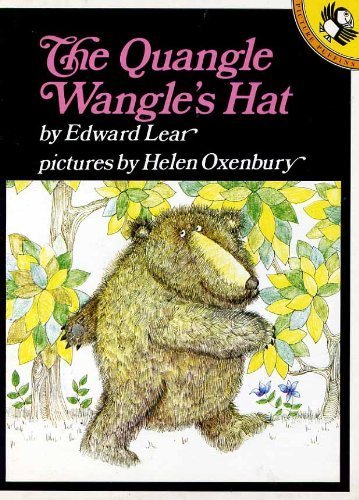
Q is for (The) Quangle (Wangle’s Hat)
Edward Lear’s The Quangle Wangle’s Hat (Hinkler Books) because I wish I had written a poem about such a fantastic creature with such a fantastic hat.
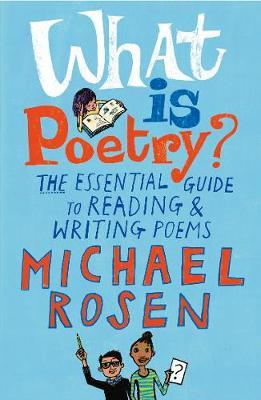
R is for (Michael) Rosen
What is Poetry: The Essential Guide to Reading & Writing Poems (Bloomsbury) shows off his addictive madcap humour in poems that are anarchic fun with porridge globs, sickly custard, hairy knees, the very mysterious Hidebehind and the world’s best strawberry fisher. He has a smorgasbord of books and is an admirable ambassador for children’s poetry in all shapes and sizes. Check out Michael’s Even My Ears Are Smiling (Walker Books).
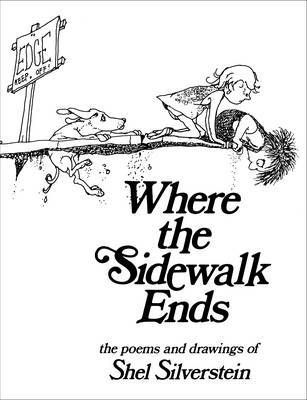
S is for Shel Silverstein
Shel Silverstein is the go-to poet for anyone who loves children’s poetry because he brings together the most spring-laden imagination with the most trampoline-soaring language in the most eye-opening ear-vibrating heart-warming mind-skating view of things. His illustrations are equally full of zany life-boosting energy. Two favourites: Where the Sidewalk Ends (HarperCollins) and Every Thing On It (Particular Books).
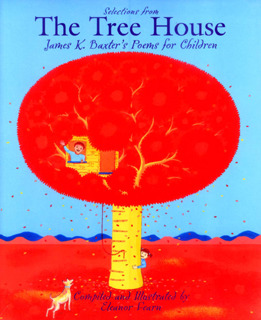
T is for The Tree (House)
Selections from The Tree House: James K Baxter’s Poems for Children (Scholastic) shows he had an ear tuned into rhymes and repetition that catch hold of the child reader because they are so very good read aloud. After that, there are the images that stick around, especially that growly bear under the stairs, after your honey!
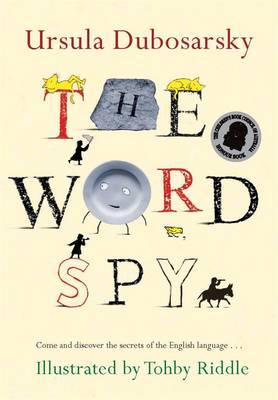
U is for Ursula (Dubosarsky)
Ursula Dubosarsky’s The Word Spy (Vintage) is a perfect handbook if you love playing with words and language as either a reader or writer. Not exactly a poetry collection (oh not at all!), but an adventure feast if you want to delve and dip and spy on words.
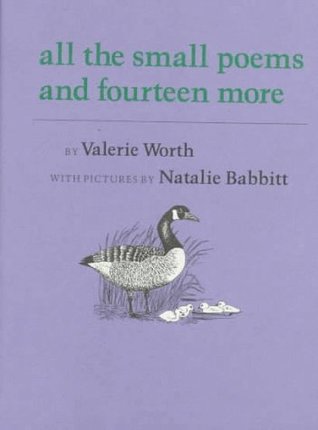
V is for Valerie Worth
Valerie Worth is a long-time favourite American poet who wrote slender thoughtful poems like little cobwebs on the page: All The Small Poems and Fourteen More (Sunburst). You can stop and admire the glistening threads or see through to the marvellous elsewhere.
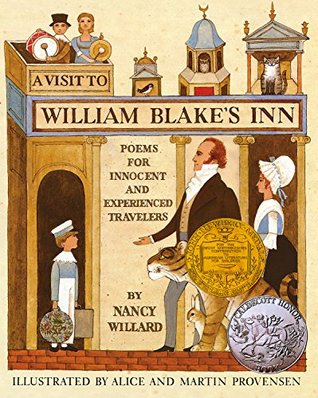
W is for (Nancy) Williard
Nancy Williard’s A Visit to William Blake’s Inn: Poems for Innocent and Experienced Travellers (Voyager Books) imagines an inn run by poet, William Blake, famous for his ‘Tyger, tiger, burning bright,/ In the forests of the night’ poem. Each poem is plump with magical and mysterious detail that is a tiny bit in debt to poems from the past.

X is for (NZ Poetry) Box
My blog, NZ Poetry Box for children’s poetry news, reviews and poetry challenges, and a continuing anthology of poems by children. This year, I post a challenge on the first of the month and poems on the last day of the month.
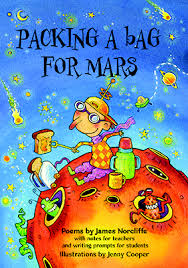
Y is for Young (Poets)
Young Poets in Christchurch have had the chance to be inspired by James Norcliffe. He has gathered his poems together in Packing a Bag for Mars (Clerestory Press) – along with some very tempting poetry challenges.
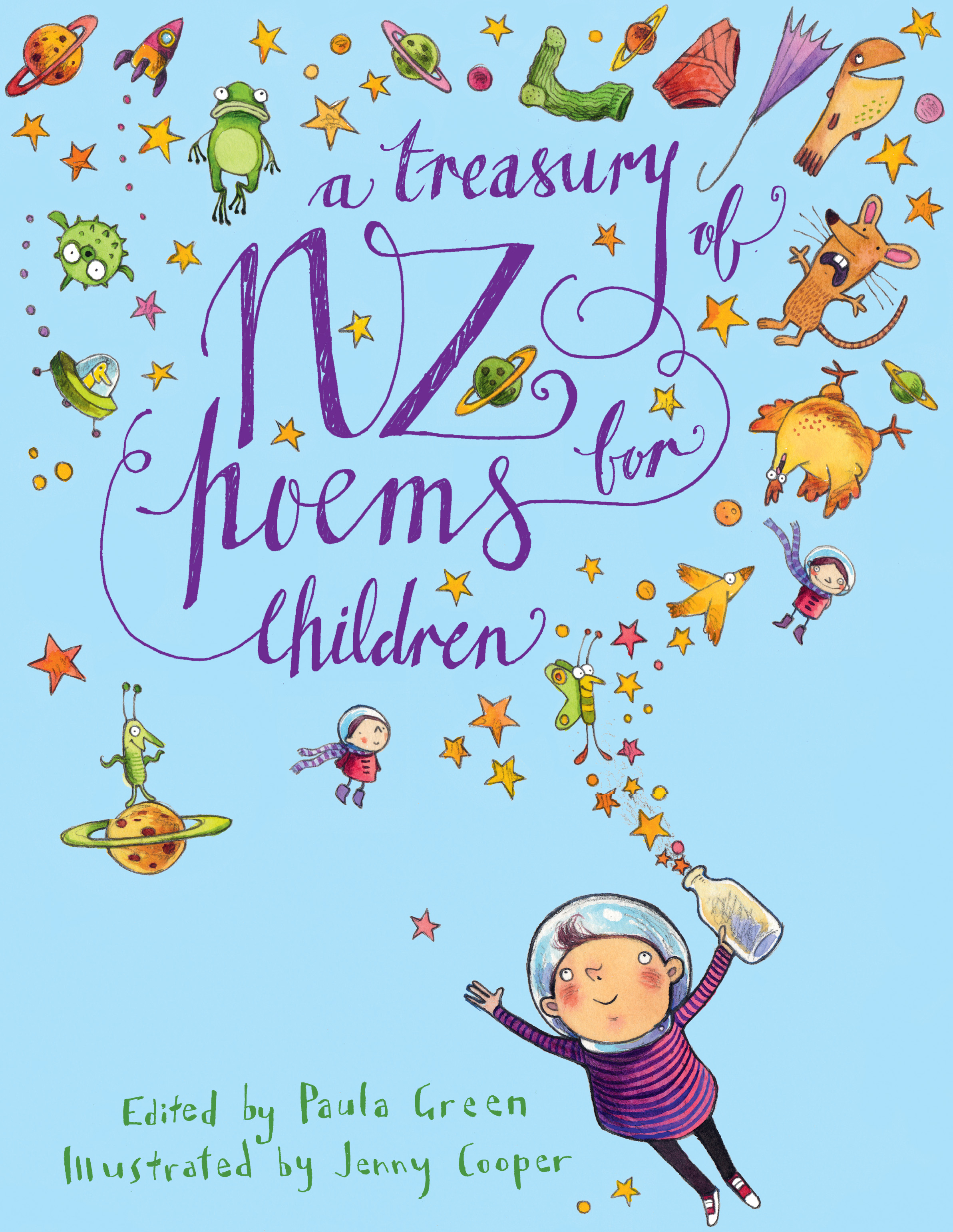
Z is for (A Treasury of New) Zealand (Poetry)
You can find A Treasury of New Zealand Poetry for Children (Random House), the anthology I edited, in libraries – and Penguin Random House have just confirmed a reprint of the paperback edition of the Treasury in November 2017. You might also find yourself tracking down the poets’ own books in our well-stocked libraries or in the dark and exciting corners of second-hand bookshops. I myself am still on the hunt for a copy of Joy’s Pawprints in the Butter (mentioned above) with its gorgeous illustrations by children.
A tasty treat from the Treasury:
‘Some words just feel nice
like green apple butter
and blue lemon ice’
Elena de Roo, from ‘Words’
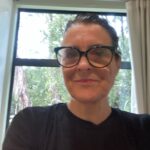
Paula Green
Paula Greenis a poet, writer, reviewer and anthologist. She has written and edited many collections of poetry, including several for children, along with two children’s novels,The Terrible NightandLittle Tales of Hedgehog and Goat. Her poetry collectionThe Letter Box Cat and other poemswon Children’s Choice at the 2015 New Zealand Post Book Awards, and she has won a number of Storylines Notable Book Awards for her books for children. Paula is the creator of two blogs, NZ Poetry Shelf and NZ Poetry Box ( https://nzpoetrybox.wordpress.com/), that celebrate poetry in Aotearoa. In 2017 Paula received the Prime Minister’s Award for Poetry and was made Member of the New Zealand Order of Merit for Services to Literature and Poetry. She lives near Te Henga Bethells Beach on Tamaki Makaurau’s West Coast with her partner, the artist Michael Hight.



